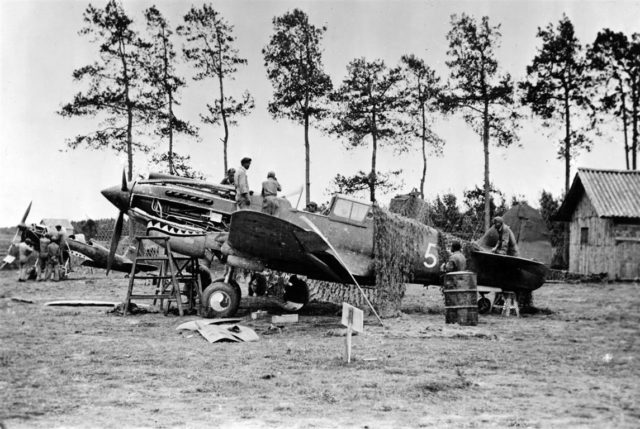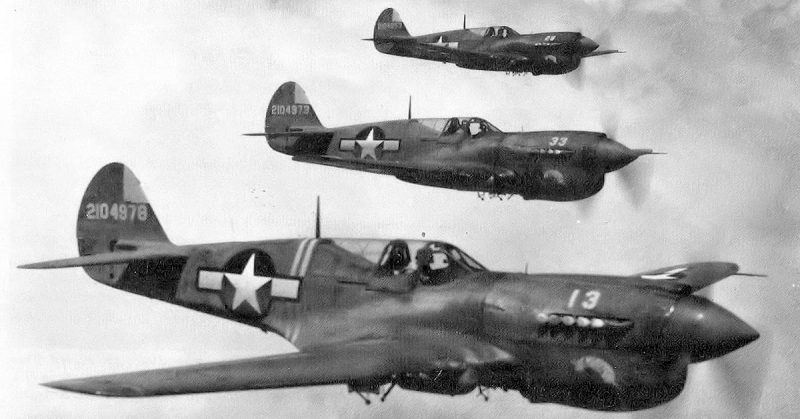The remains of two pilots and a Martinsburg-area man killed in Southeast Asia while training with the Flying Tigers in the Second World War are coming home after nearly a century.
DNA analysis and circumstantial evidence identified the remains of Maax C. Hammer Jr., of Cairo, Ill., John Dean Armstrong of Hutchinson, Kan., and Peter William Atkinson of Martinsburg, W.Va., the Defense POW/MIA Accounting Agency confirmed last month.
The DPAA, which is charged with the recovery and accounting of missing service members from past battles, said the three men were killed in three separate flight training accidents in September and October 1941, near Toungoo, Burma, now known as Myanmar.
America entered the Second World War following the Japanese attack on December 7, 1941, at Pearl Harbour.
In mid-1941, Hammer, Armstrong, and Atkinson were recruited to join a small group of American pilots fighting the Japanese. They worked for the ‘American Volunteer Group,’ better known as the ‘Flying Tigers,’ but in reality for the Central Aircraft Manufacturing Co. or CAMCO.

The group comprised of three squadrons of fighters, each with about 30 Curtiss P-40 single seat aircraft. They successfully kept the Burma Road and the port of Rangoon open at a crucial time, according to historical evidence.
Hammer died September 22, 1941, when his plane crashed while returning to the airfield after a heavy rainstorm. Armstrong died on September 8 in a mid-air collision with another airplane flown by a pilot of the fighter group, the DPAA determined. Atkinson, who had volunteered to test-fly a P-40 fighter, was pulling out from a high-speed dive when the plane seemed to fragment and fell about 1,500 feet, according to the agency’s explanation of the October 25, 1941, accident.
The aircraft’s motor, just equipped with new armament, separated from the fighter and hit the ground. The fighter also crashed with wreckage covering a one-mile area. Atkinson’s body was strapped into the pilot’s seat, the DPAA said.
An interment service is scheduled for April 8 at Rosedale Cemetery just beyond Martinsburg. His remains are to be reinterred in the family plot, said his nephew, Patrick Moore on Monday.
He and other relatives said they had little hope that the remains of their ‘Uncle Bill’ would ever be located following years of searching.
So many things have come together, Moore said. It’s unbelievable where they are at this point.
The pilots’ remains had been recovered in December 1947, but eventually were reinterred in a plot marked ‘Unknown’ at the National Memorial Cemetery of the Pacific in Honolulu, Hawaii, in March 1949, said the agency.
Moore, who lives less than five miles from the burial ground called the ‘The Punchbowl,’ gave credit to the research efforts of Kenneth Tilley for assisting in identifying the remains.
Tilley, who was employed for what was then known as the Joint Prisoners of War/Missing in Action Accounting Command, said that he began working on cases of missing American Volunteer Group pilots in 2013.
He ran across some files for unknowns interred in The Punchbowl, known as the ‘X-files’ Tilley said.
Notes on the four files showed they were pilots who had been recovered from Toungoo at the war’s end and reinterred in Barrackpore, India.
Identifications were lost for the four sets of remains, and they wound up in Hawaii when the cemetery in India closed, Tilley said.
His research, he explained, found that no other Americans died and were buried in Toungoo besides the three pilots. He contacted their families to obtain medical data that could help identify the remains.
The problem with identifying the pilots started after the original headstone in St. Luke’s Anglican Church Cemetery in Toungoo, the sites of the men’s initial burial, were destroyed by the Japanese during the war.
The records and grave markers were destroyed, but the graves were not touched. American officials were told of their location by the cemetery‘s caretaker, the DPAA said.
An interment service for Hammer is being planned for Carbondale, Illinois, said Tripp Alyn, a cousin of Hammer and a member of the Flying Tigers Association, where he’ll be reinterred in a family plot with his grandparents and parents.
Atkinson’s nephew, Tyrus Mullis of Winchester, Va., said he believes that the government should take the lead before it’s too late to do DNA analysis of soldier’s remains that have been recovered in similar circumstances and buried but not identified, to reunite them with their families, Herald-Mail Media reported.
Three thousand families could be receiving the same type of news that they got, Mullis said.
